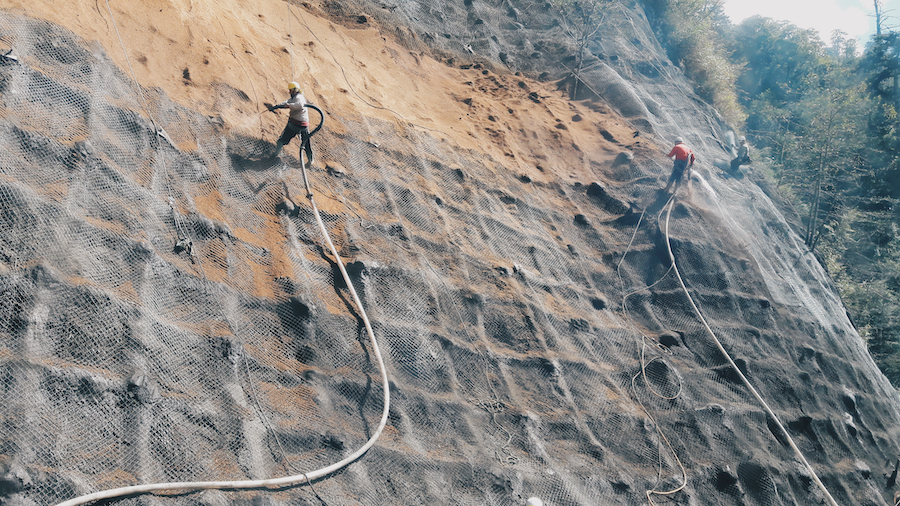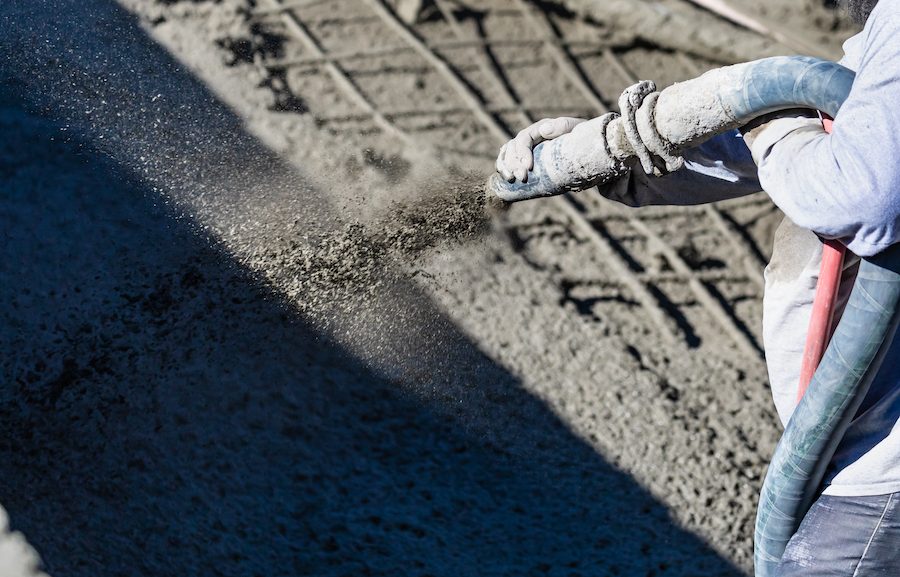Shotcrete is often relied upon in construction thanks to its flexibility, strength, and budget-friendliness. However, when browsing for some you’ll notice it comes in two types: wet and dry. While it might not seem like these would have much of a difference, there’s a stark contrast between them. Below you’ll discover more about this material and how to determine if wet or dry shotcrete is right for your job.
What is Shotcrete?
This is a type of concrete that’s misted over an area with either a wet or dry mix. It relies on hoses to transport and spray it on the surface. Unlike traditional hoses, shotcrete selections use powerful pneumatic ones which generate more force helping it to stick better.
While shotcrete contains concrete, it has slightly different properties. This is because it uses a unique water to concrete ratio that allows it to create stronger bonds and encourages it to dry faster. It’s also typically fastened to steel meshes or rods.
What Can Shotcrete Be Used For?
Shotcrete can be utilized in countless industries to build and repair objects. Some include:
- Covering mine surfaces
- Building bridges
- Doing garden erosion repair
- Forming domes
- Creating home foundations
Dry vs. Wet Shotcrete – What’s the Difference?
It’s crucial to pay close attention to the distinctions between these two materials. Here is a bit more about them.
Dry Shotcrete
Also referred to as gunite, dry shotcrete is placed into a container as a powder. When the nozzle attached to the container is turned on, the shotcrete will get damp as it’s pushed out through it. This allows you to control the water quantity as you apply the shotcrete.
Wet Shotcrete
Unlike dry shotcrete, this pick is already damp when it’s poured into a container. While its process can take longer, wet shotcrete allows you to adjust its water and cement ratio more freely.
 Which is the Right Pick?
Which is the Right Pick?
Both of these serve the same purpose but how to apply them will vary. Below are a few things to consider before using one.
Check the Job Requirements
One of the most vital things to do is brainstorm the task’s demands. For instance, what is the scope of the project? If it’s large, wet shotcrete is usually ideal because it can be spread faster. On the other hand, if you need to reach steep angles, dry shotcrete is useful because it can be shot at a greater distance. If you’re short on time, dry shotcrete is also excellent because it can be applied at a faster rate. It’s also easier for workers to transport because it’s more lightweight.
These might seem like irrelevant details but they’re key to contemplate. Otherwise, you might find yourself stuck with the wrong shotcrete – a move that can cost both time and money.
If Extra Equipment is Needed
Sometimes, additional tools might be necessary to purchase. For dry options, a long hose is required so the material can be evenly applied. Aside from this, you’ll also need to budget for nozzles and pumps.
Remember, no matter which one you buy, you’ll need an air compressor. But, the type of air compressor you’ll want will vary. Dry shotcrete needs more air to work so you’ll need to invest in a larger and often pricey machine. For wet shotcrete, you’ll only need a 185-375 CFM compressor that tends to be smaller and more affordable.
The Availability
Another thing to check is if wet or dry shotcrete is available where you plan to work. Most of the time both are accessible, but not always. The type available could vary depending on the climate. Wet shotcrete tends to shrink quickly, especially in humid conditions. This could result in it cracking or warping. In cold temperatures, dry shotcrete might be a little temperamental as it could have a hard time bonding.
Besides this aspect, you might also have a tough time finding enough of the material for your job. Some suppliers might only have a few 90-pound bags. This can be a huge hassle, especially if you need 1,000-3,000-pound sacks. It’s important to confirm that you can obtain the shotcrete you need before diving into the project.
Your Budget
You’ll also want to monitor the price of shotcrete materials. If you need an affordable option, wet shotcrete is best. However, it’s not as strong as dry shotcrete and it can be hard to control. While dry shotcrete might be expensive at first, it’s usually stronger and easier to apply. You’ll want to consider whether a cheaper method is fitting or if you’re willing to obtain a pricey but high-quality selection like dry shotcrete.
Things to Keep in Mind
Shotcrete is useful but there are a few things you’ll need to watch for. One is its drying process. Regardless of the one you use, once the shotcrete is mixed with water, it will harden in seconds if not kept moist. You’ll need to make sure to put it on as quickly as possible so it bonds well.
You should also be careful with the water ratio. Too much of it can dilute the substance which can turn it into a soupy blend. If this happens, you’ll find that when you spray it, it will slide down the surface rather than stick to it. Ideally, it should have a 1:2:2.5 proportion. This way, it’s fluid but still thick enough to adhere to the surface.
It might also take some time to apply shotcrete to certain areas. If it’s a large section (like a pool) you’ll need to be prepared to spend a bit of time working with it. It might also require you to invest in quite a bit of the shotcrete – something which could be costly. Due to this, it’s a good idea to make a blueprint of your job and weigh the pros and cons of each.
Shotcrete is beneficial for numerous projects but it’s essential to pick the right option. By using this information, you can determine whether wet or dry shotcrete is right for your task.
